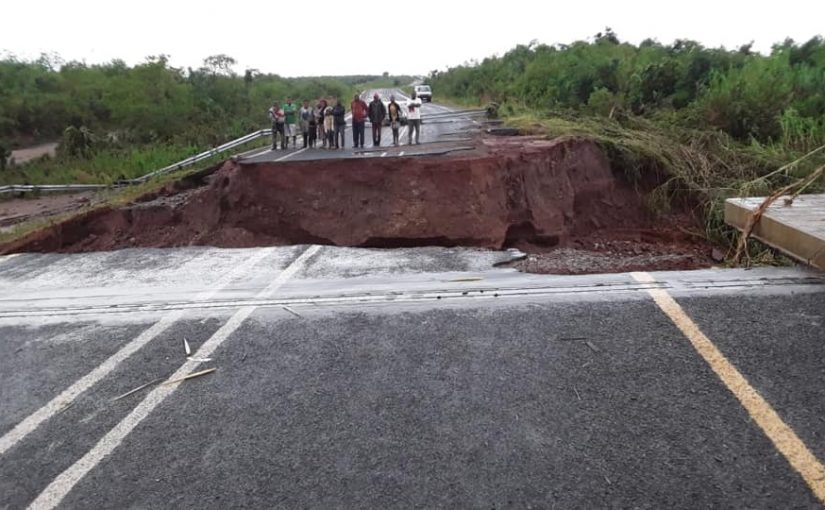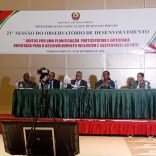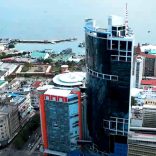Mozambique; The day the World Bank President knocked on Aurélio's door
Mozambique: EN6 cost US$410 million, was “supposed to withstand any kind of weather”

Photo: Facebook
The Minister of Public Works, Housing and Water Resources has dubbed the destruction by flood waters of the brand new National Road No. 6 (EN6), “surreal”. The roadway, costing US$410 million in foreign debt, “was supposed to withstand any kind of inclement weather”, Joao Machatine said.
Mozambicans are still reeling from Tropical Cyclone Idai’s trail of destruction. On Saturday afternoon (17) emergency authorities were alerted to sudden flooding in Nhamatanda district due to increased water flow in the Búzi and Púnguè basins. Hundreds of citizens were caught unaware and motorists travelling along National Road No. 6 found themselves cut off.
At least one car was washed away by water that not only flooded the about-to-be-inaugurated US$410 million road, but also showed that infrastructure being built in Mozambique is still far from being resistant to natural disasters.
“What we are seeing is something surreal given the consistency of this infrastructure, from the base to the sub-base we have almost a concrete slab before the coating itself, we have a thickness of 20 to 25 centimetres of coating and all this was removed by water,” Minister Machatine said after visiting the damaged sections in Nhamatanda district.
“The brutal force of the waters was such that it destroyed what was unthinkable for us to happen, we are seeing the whole platform of the road from the base and the coating removed. This platform has a consistency that was supposed to withstand any kind of weather and, as if that were not enough, we are witnessing this bridge that gave way due to the pillar. There was so much excavation of the foundations of this pillar it ended up yielding and consequently bringing down the board itself,” he said into the radio microphones.
A Verdade found that the sections of the EN6 that were swept by the waters were located in a region that is a natural water course for the Búzi and Púnguè river basins, and better engineering and resilience solutions should therefore have been implemented.
Machatine said the government’s main concern was “to ensure the that roads are passable – so we may have to create a deviation. We will let the water level fall some more, and then create a deviation here.”
“We will have two fronts here, one coming from Inchope towards Beira to ensure the traffic in this section and another that will come from Beira to Inchope to reset in an area of 10 kilometres. We will do everything possible so that, as soon as possible, we can guarantee, even if conditionally, the passability of this section, and in the meantime we will assess the need for a definitive intervention,” he promised.
National Highway 6 is the main link between the capital of Sofala province and Mozambique, but along its more than 287 thousand kilometre length moves the entire economy of the central region linking the port of Beira to Dondo municipality, the districts of Nhamatanda, Gondola, Manica, and Chimoio city. It is also a key component of the corridor leading to Tete, Zimbabwe and Malawi.
By Adérito Caldeira












Leave a Reply
Be the First to Comment!
You must be logged in to post a comment.
You must be logged in to post a comment.